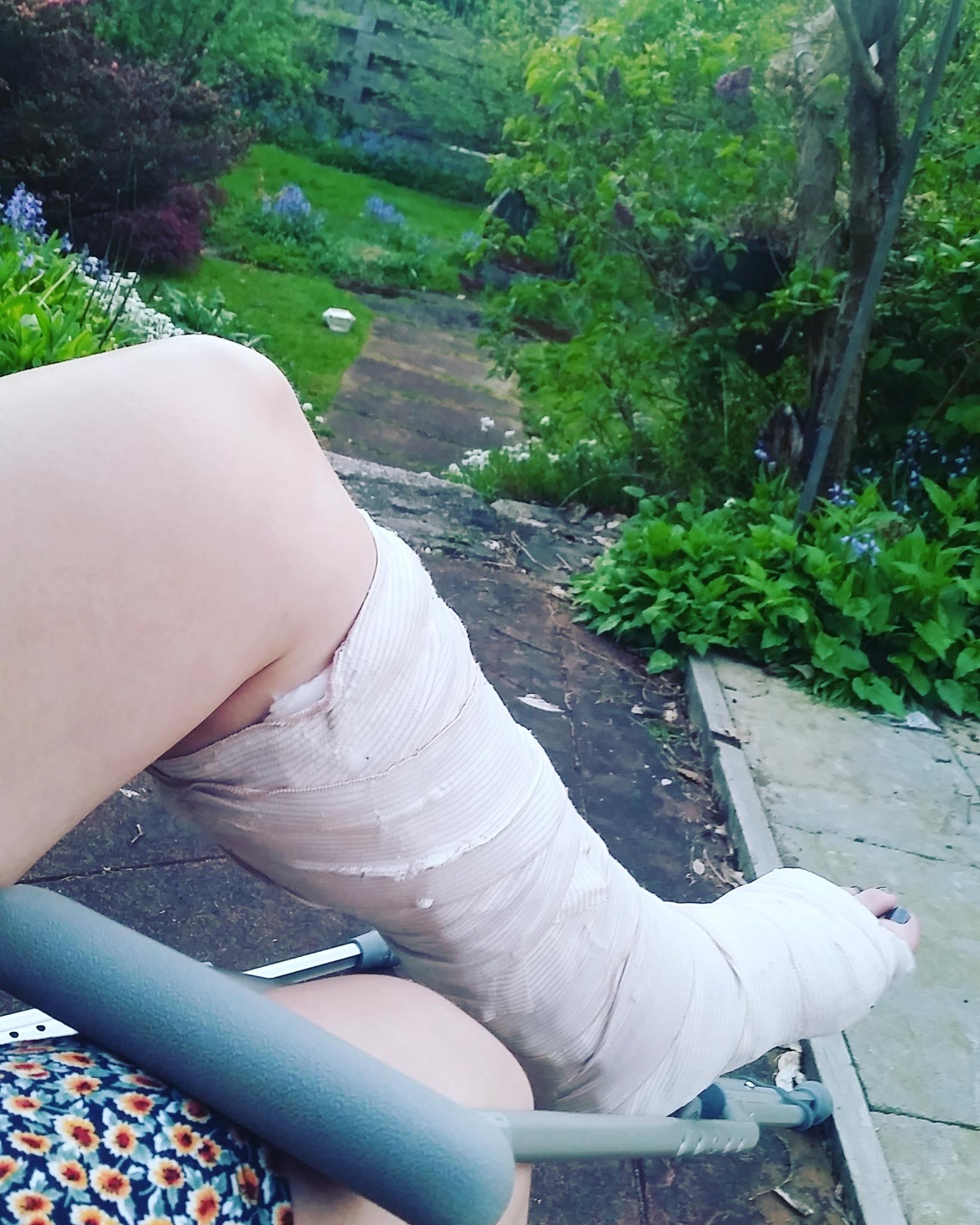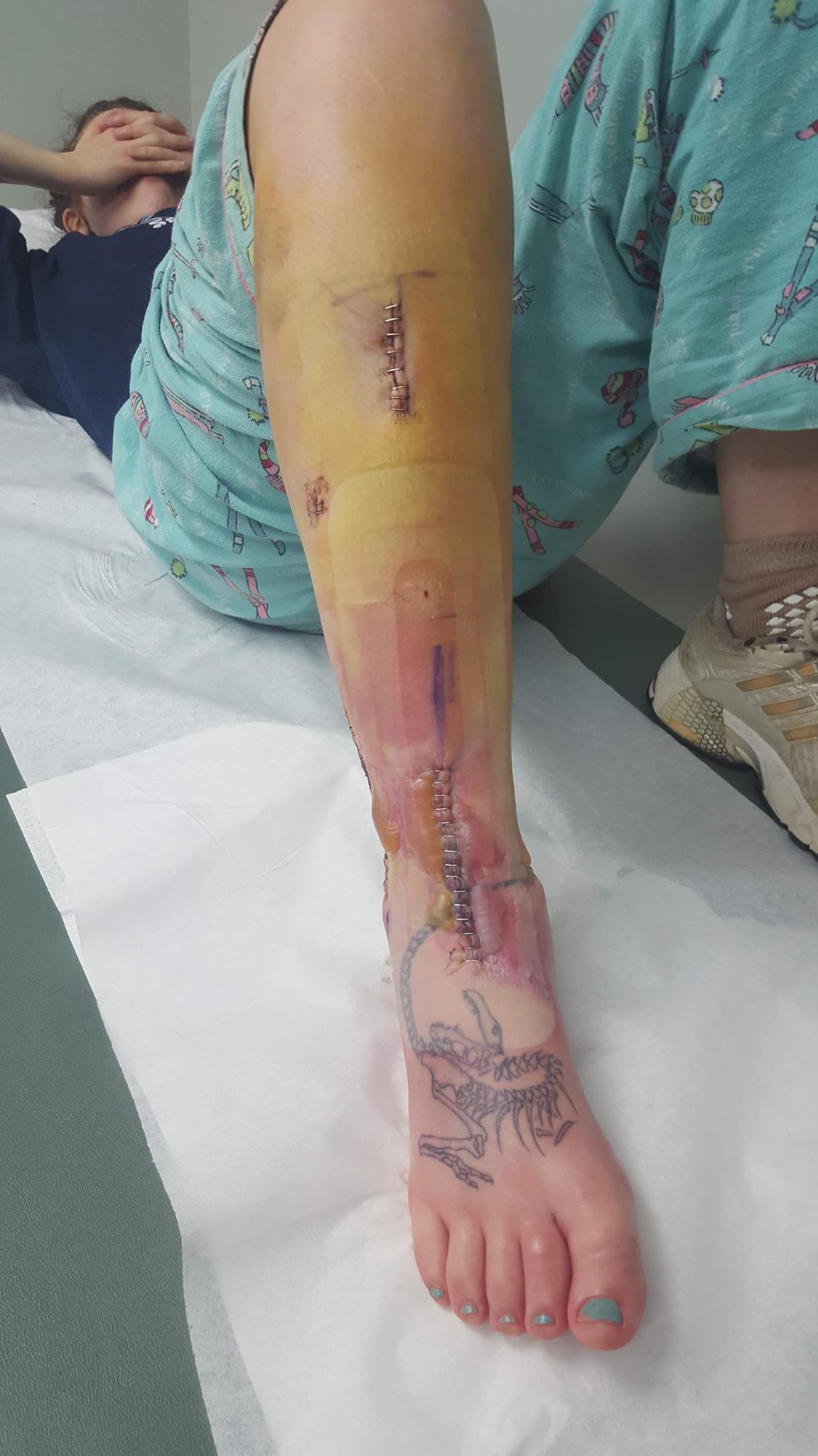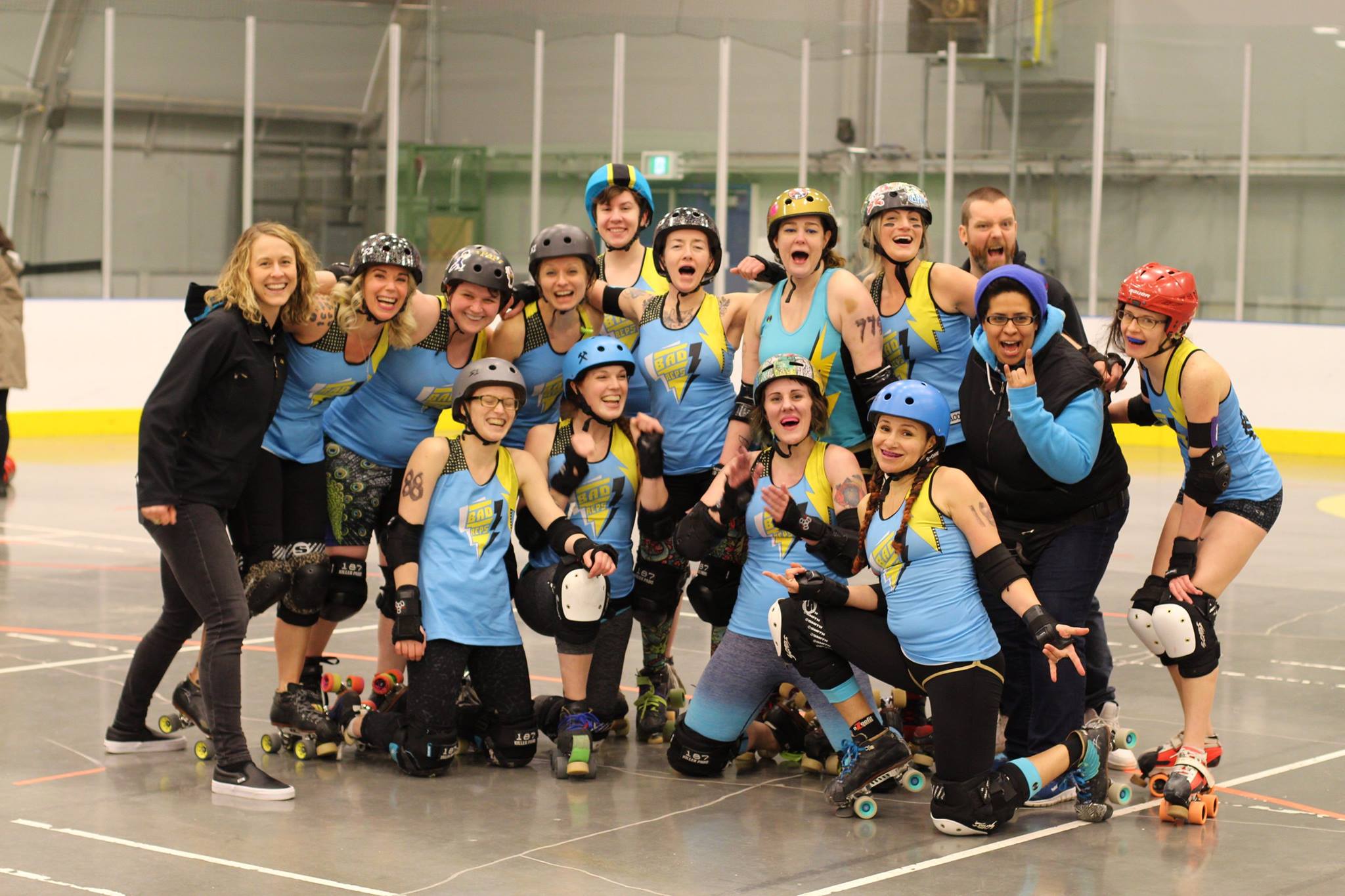There’s an unmistakable sound in roller derby that few forget.
Your bone snapping.
When you get slammed into the ground or thrown across the track — and that happens often — you don’t make a sound. You jump back up. You get back in the game.
But there’s one occasion where you’re given free range to bellow as many expletives as you want. To stay on the ground and ignore the competition.
That excuse comes from a very distinct sound. One that bounces off the walls of the sports complex. A sound that makes the spectators groan in half-disgust, half-concern. One that still makes you nauseous when you think about it.
I was in my third year of the sport, playing with the Terminal City Rollergirls. I was warming up with my team, the Bad Reputations, on the night of our season opener. We were almost undefeated last year — we made it to the championships and came in second — and were ready to start the season off with another win.
It’s nothing like the staged game that played on television sets in the 1970s. There are plenty of rules and regulations to keep the game safe and penalties if you don’t comply. No one, not even refs, are allowed on the track unless they have a derby-approved helmet, mouth guard, wrist guards, elbow pads, and kneepads.
Still, the game is rough. You can legally hit another player in the chest, shoulders, sides, butt or thighs. You’ll see players use their shoulders to knock the wind out of another. Skates suddenly veer to the side, hips following, to send someone flying off the track. There’s the somewhat disgustingly named “clubbing a seal” move, where player suddenly jerks a shoulder back into an opponent trying to get past.
In my first year, back in 2015, I’d cracked some ribs, but they healed after two months. In my second year, I exacerbated a back injury and relinquished my position as jammer. This was my third year. I was a better and stronger player than I ever had been. I was ready to kill this season.
I had just started breaking a sweat as I ran some practice drills with teammates Loca Smoke-ya, MsChete, Kreme de la Kremlin, Canadian Bacon, VanCougar... derby names run the gamut of creativity.
I remember laughing, blocking some members of my team, receiving some hits, and then absorbing a big one that sent me sprawling. I was used to hitting the floor. I wasn’t used to hearing what sounded like the crack of thunder.
There are some photos a spectator took right after I heard that snap. I have my eyes closed, I’ve spit out my mouthguard to yell, and I’m cradling my left leg.

I don’t remember the pain now, but I do remember how gross the pain was. I remember someone asking, “Is she okay?” and my coach answering “No, I heard her ankle snap.” Everyone left the track. First aid came over and applied ice, my teammate Bacon held my ankle steady in her hands, someone yelled for an ambulance to be called. I went through waves of pain for 45 minutes until the ambulance arrived. My coach showed me videos of teammates singing in the car, Bacon commented on the crotch of my pants, they joked about the drugs that would soon be coming — anything to keep my mind off the pain.
A bumpy ambulance ride and two X-rays later, they found my upper fibula — calf bone — had a long vertical break, with a second chunk broken off in my ankle.
Two weeks later, I had surgery to put some screws put into my ankle. Now, 14 weeks later, I’m finally off crutches, gracing the world with a very slow and wobbly walk.
During that 14 weeks, I joined a very unique subset of people — those broken by roller derby.
They have multiple Facebook groups with members from all over North America. A teammate will add you once you’re broken — introduced by name, date of injury, and break details.
I was added to one Facebook support group that has more than 2,000 members. Six are from my league. New players are kindly (though morosely) welcomed almost daily. Our league has a Team Bionic group — everyone with screws, plates, or any other bits of metal tacking their pieces of bone together.
There are lots of medical questions, gory details, and endless X-ray, cast, and surgical pictures on the pages. The groups serve a major purpose beyond revelling in breaks worse than your own. It’s a place where you can complain about the pain even if it’s day 100 of complaining; where you can ask the million questions your surgeon didn’t answer; where you can type while you’re sort of crying because breaks are a lot harder than you thought; and where no one minimizes anyone’s injury, because it’s the emotional toll that really hurts, long after the cast is gone.
Many skaters with families ponder if the sport is worth losing the ability to take care of their children. They discuss losing months of income, social isolation, decrease in physical activity while their muscles atrophy, not to mention the endless pain.
Those with partners, family, or roommates to help at home are more fortunate. But everyone faces new challenges. Meals can no longer be cooked. Dogs can’t be walked. Upstairs bedrooms have to be relocated. God knows what players do if there isn’t a main floor bathroom.
I remember talking with a fellow broken one, Jessica Rabid, about not drinking as much water because that meant more trips to the bathroom. She said she often just crawled, because pain usurps dignity when you have two giant plates and 14 screws on your tibia and fibula. She shattered both bones during a practice. Two surgeries and 14 months later, she’s still dealing with the physical repercussions.

I posted in one group asking about their breaks, what tolls that had taken, and if they would return. Their injury descriptions were grisly, but most had already returned or wanted to return.
Finances were the biggest complaint. “I can’t afford another injury, yet I’m still contemplating going back,” one said. Another added “Why do I keep coming back? It’s the biggest rollercoaster. I wanted to give up so many times but here I am.”
One woman who lost her job said she still hadn’t financially recovered nine months later. Her team let her put off paying dues so she could return to skating. “The body, mind and money heal at different rates and is not linear. Some of my relationships have been damaged beyond repair but I figure — only the worthwhile ones survived,” she said.
One player went back after six months, only to have more complications. Now she’s a non-playing volunteer with her team, but the emotional toll lingers. “I’m 41, can’t afford another injury (still paying bills), and don’t have the time or energy to address some PTSD issues triggered by the trauma of injury.”
Derby teams are many people’s major social group. Weekly practices mean more than the physical high; it’s a place that can be really welcoming, especially for LGBTQ2+ folks. Derby aliases provide relief for some who want a respite from regular life. New players, aptly named “fresh meat,” are accepted into the herd with congratulations.
One woman said although she’s still paying surgery bills two years later, she had no regrets: “This sport literally saved my life.”
Roller derby was one of the best things in my life. There aren’t many options for competitive sports after college. Moving to new cities isn’t as scary when there’s derby, because you instantly have a group of people welcoming you. There are tons of hilarious weirdos to befriend.
Non-derby folks ask if I’ll go back. All my teammates ask when I’ll be back.
I’m still in enough pain that the horizon is far away. I’m volunteering at games, cheering on my team, and hobbling on the beach at our annual camping trip. I tell myself the chances of breaking something for a second time is low. I ignore the stories of all the people who have broken things two times in a row. I’m still not allowed to do any exercise except slow walking. I see Jessica Rabid’s Instagram photos of her lifting weights — upper body only — with 10 or so staples holding the skin together from her newest surgery.
I was talking recently with a past coach about my return. I need enough savings to protect against the awful luck of a second break. I need at least three months of solid exercise. I need to build up enough nerve to take a hit without wincing.
I put on my skates, sitting down, just to roll them around. My bad ankle pops and I take them off. My leg is starting to develop a faint outline of a calf muscle. The awful idea of running is even appealing to me at this point. But I joined roller derby so I wouldn’t have to run or pretend to like yoga.
Since I live in Vancouver, I’ll need a good reason why I’m not doing yoga after I’m healed.
I guess I’ll be coming back next season. ![]()
















Tyee Commenting Guidelines
Comments that violate guidelines risk being deleted, and violations may result in a temporary or permanent user ban. Maintain the spirit of good conversation to stay in the discussion.
*Please note The Tyee is not a forum for spreading misinformation about COVID-19, denying its existence or minimizing its risk to public health.
Do:
Do not: